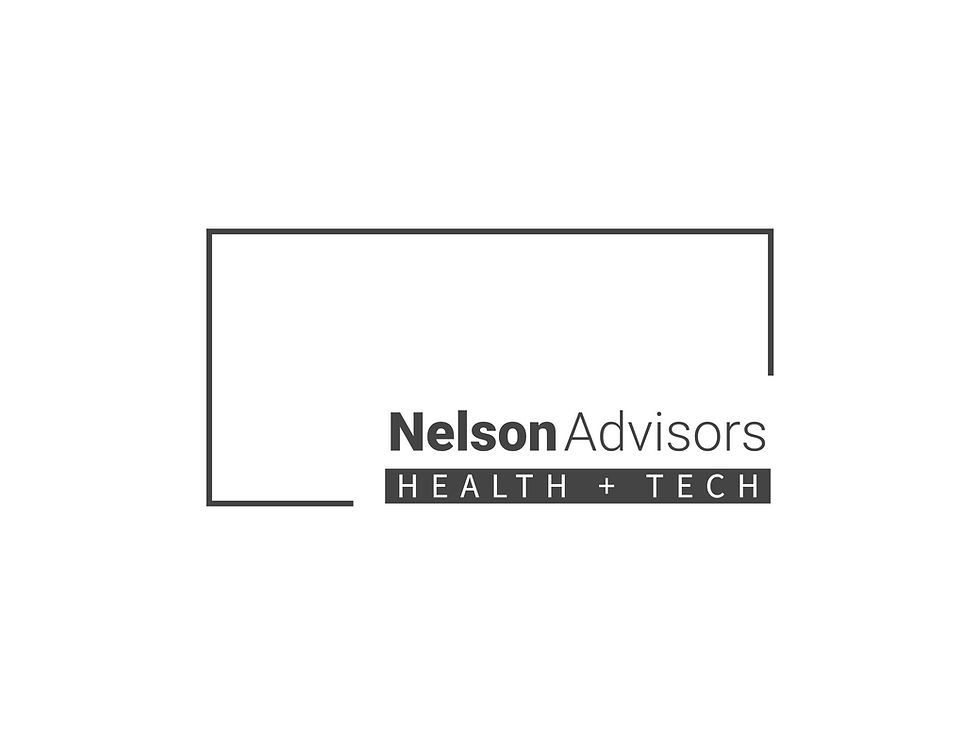2025 is shaping up to be a pivotal year for the "Digital Left Shift" in UK HealthTech
- Lloyd Price
- Jan 25
- 6 min read

Exec Summary:
There is a growing recognition of the "digital left shift" in healthcare. This concept leverages digital technologies to achieve the goals of the traditional left shift – early intervention, prevention, and community-based care.
The term "digital left shift" is derived from a visual representation of the healthcare system, where the "left" side represents primary care and prevention, while the "right" side represents specialised and hospital-based care. Shifting resources and focus to the left side aims to prevent people from needing more intensive care on the right side.
4 Key Drivers of the 'Digital Left Shift' in UK HealthTech are:
NHS England - 10 year plan and policy to support a move from a reactive model of health care to a proactive model of health and well-being
Darzi report - recommendations from Lord Darzi to invest in digital solutions in the community, improve the quality of community data and productivity within community services
Labour government's three shifts - Wes Streeting, Secretary of State for Health and Social Care of the United Kingdom emphasising the ambition to 'shift the focus of the NHS out of hospitals and into the community'
HM Treasury - new focus and ambition to 'Get Britain Working' by addressing the economic inactivity due to health through effective community based treatment of long term conditions
Examples of how digital technologies are enabling this 'left shift':
Remote patient monitoring: Wearable devices and telehealth platforms allow for continuous monitoring of patients' health status, enabling early detection of potential problems and proactive interventions.
Digital therapeutics: Apps and other digital tools can help patients manage chronic conditions, such as diabetes or heart disease, through personalised guidance, reminders, and support.
Artificial intelligence (AI)-powered diagnostics: AI algorithms can analyse medical images and other data to assist in early diagnosis of diseases.
Telehealth consultations: Virtual consultations with healthcare providers can improve access to care, especially for people in rural or remote areas.
Nelson Advisors work with Healthcare Technology Founders, Owners and Investors to assess whether they should 'Build, Buy, Partner or Sell' in order to maximise shareholder value > https://nelsonadvisors.co.uk/
Healthcare Technology Thought Leadership from Nelson Advisors – Market Insights, Analysis & Predictions. Visit https://www.healthcare.digital
Buy Side, Sell Side, Growth & Strategy services for HealthTech Founders, Owners and Investors. Email lloyd@nelsonadvisors.co.uk
Nelson Advisors Healthcare Technology Newsletter > Mergers, Acquisitions, Growth, Strategy, Insights & Predictions. Subscribe Today! https://lnkd.in/e5hTp_xb
#HealthTech #DigitalHealth #HealthIT #NelsonAdvisors #Mergers #Acquisitions #Growth #Strategy #Innovation #NHS #VentureCapital #PrivateEquity #UK #Europe

Origins of the 'Digital Left Shift'
The "left shift" in healthcare refers to a strategic approach that aims to prevent health problems from escalating and requiring costly and potentially risky interventions. It involves:
Early intervention: Identifying and addressing health issues at the earliest possible stage, often in primary care settings.
Prevention: Implementing measures to prevent diseases and conditions from developing in the first place.
Community-based care: Providing care and support closer to where people live, reducing the need for hospitalizations.
Why is it called a "left shift"?
The term is derived from a visual representation of the healthcare system, where the "left" side represents primary care and prevention, while the "right" side represents specialised and hospital-based care.
Shifting resources and focus to the left side aims to prevent people from needing more intensive care on the right side.
Benefits of the left shift:
Improved health outcomes: Early intervention and prevention can lead to better health outcomes for individuals and populations.
Reduced healthcare costs: Preventing diseases and conditions from progressing can significantly reduce healthcare costs.
Increased access to care: Community-based care can make healthcare more accessible and convenient for people.
Improved patient experience: Early intervention and community-based care can improve patient satisfaction and quality of life.
Challenges of implementing the left shift:
Funding and resource allocation: Shifting resources from specialised care to primary care and prevention can be challenging.
Coordination and collaboration: Effective implementation requires strong coordination and collaboration between different parts of the healthcare system.
Changing healthcare culture: Shifting focus from treating illness to preventing it requires a change in mindset for healthcare providers and patients.
Overall, the left shift is a promising approach to improving healthcare quality and affordability. However, it requires careful planning, implementation, and ongoing evaluation to achieve its full potential.

4 Key Drivers of the 'Digital Left Shift' in UK HealthTech
NHS England - 10 year plan and policy to support a move from a reactive model of health care to a proactive model of health and well-being
Darzi report - recommendations from Lord Darzi to invest in digital solutions in the community, improve the quality of community data and productivity within community services
Labour government's three shifts - Wes Streeting, Secretary of State for Health and Social Care of the United Kingdom emphasising the ambition to 'shift the focus of the NHS out of hospitals and into the community'
HM Treasury - new focus and ambition to 'Get Britain Working' by addressing the economic inactivity due to health through effective community based treatment of long term conditions
The NHS is actively pursuing a "digital left shift" strategy by actively prioritising and focusing on prevention, intervention and community based care.
Focus on Prevention: Digital tools are being used to promote healthy lifestyles, such as apps for tracking physical activity and diet. AI-powered risk prediction models are helping identify individuals at high risk of developing certain conditions, allowing for earlier interventions.
Early Intervention: Remote patient monitoring devices (like wearables) and telehealth consultations enable early detection of health problems, such as the worsening of chronic conditions. This allows for timely adjustments to treatment plans and potentially prevents more serious issues.
Community-Based Care: Digital platforms facilitate the delivery of care closer to home, reducing the need for hospital admissions. Examples include virtual consultations, e-prescriptions, and online access to medical records.
Key Initiatives:
NHS App: This app provides a range of services, including booking appointments, ordering repeat prescriptions, and accessing medical records.
Long-Term Plan: The NHS Long-Term Plan emphasizes the use of technology to improve health outcomes and reduce pressures on the system.
Challenges:
Digital Divide: Ensuring equitable access to digital technologies for all patients, regardless of socioeconomic background or location.
Data Security and Privacy: Protecting sensitive patient data while enabling data-driven decision making.
Integration: Seamlessly integrating digital tools into existing healthcare pathways.
The digital left shift is a key component of the NHS's efforts to modernise and improve healthcare delivery. While challenges remain, the potential benefits, such as improved access, earlier intervention, and better health outcomes, are significant.

Final Thoughts
2025 is shaping up to be a pivotal year for the "Digital Left Shift" in UK HealthTech. Here's why:
Momentum is Building: The pandemic accelerated the adoption of telehealth and remote patient monitoring. This momentum is carrying over, with increased investment in digital health solutions and a growing recognition of their potential to transform care delivery.
Policy Support: The government's focus on innovation and the NHS Long Term Plan provide a supportive policy framework for the digital left shift. Initiatives like the Accelerated Access Collaborative aim to streamline the adoption of new technologies.
Technological Advancements: AI, machine learning, and other emerging technologies are enabling more sophisticated and personalized digital health solutions. This includes AI-powered diagnostics, wearable devices for remote monitoring, and virtual reality for rehabilitation.
Industry Growth: The UK HealthTech sector is booming, attracting significant investment and fostering a vibrant ecosystem of startups and innovators. This growth is driving the development of new digital tools and services that can support the left shift.
Key Trends to Watch in 2025:
Expansion of Telehealth: Beyond basic consultations, telehealth will likely expand to include more complex services like remote surgery and virtual wards.
AI-Powered Diagnostics: AI algorithms will play an increasingly important role in disease detection and diagnosis, enabling earlier interventions and more efficient use of resources.
Personalised Medicine: Digital technologies will enable more personalised and proactive care, tailored to individual patient needs and preferences.
Data-Driven Decision Making: The use of data analytics and AI will help healthcare providers make more informed decisions about resource allocation, treatment plans, and population health management.
Challenges and Opportunities:
Data Security and Privacy: Ensuring the security and privacy of patient data is crucial for building trust and public confidence in digital health solutions.
Interoperability: Seamless data sharing and integration between different systems is essential for the effective implementation of the digital left shift.
Digital Divide: Addressing the digital divide and ensuring equitable access to digital health services for all populations is a critical challenge.
Workforce Development: Upskilling the healthcare workforce to effectively use and integrate digital technologies is essential for successful implementation.
Overall, 2025 is poised to be a year of significant progress for the digital left shift in UK HealthTech. By embracing innovation, addressing the challenges, and capitalizing on the opportunities, the UK can lead the way in transforming healthcare delivery and improving patient outcomes.
Nelson Advisors work with Healthcare Technology Founders, Owners and Investors to assess whether they should 'Build, Buy, Partner or Sell' in order to maximise shareholder value > https://nelsonadvisors.co.uk/
Healthcare Technology Thought Leadership from Nelson Advisors – Market Insights, Analysis & Predictions. Visit https://www.healthcare.digital
Buy Side, Sell Side, Growth & Strategy services for HealthTech Founders, Owners and Investors. Email lloyd@nelsonadvisors.co.uk
Nelson Advisors Healthcare Technology Newsletter > Mergers, Acquisitions, Growth, Strategy, Insights & Predictions. Subscribe Today! https://lnkd.in/e5hTp_xb
#HealthTech #DigitalHealth #HealthIT #NelsonAdvisors #Mergers #Acquisitions #Growth #Strategy #Innovation #NHS #VentureCapital #PrivateEquity #UK #Europe


















































Comments